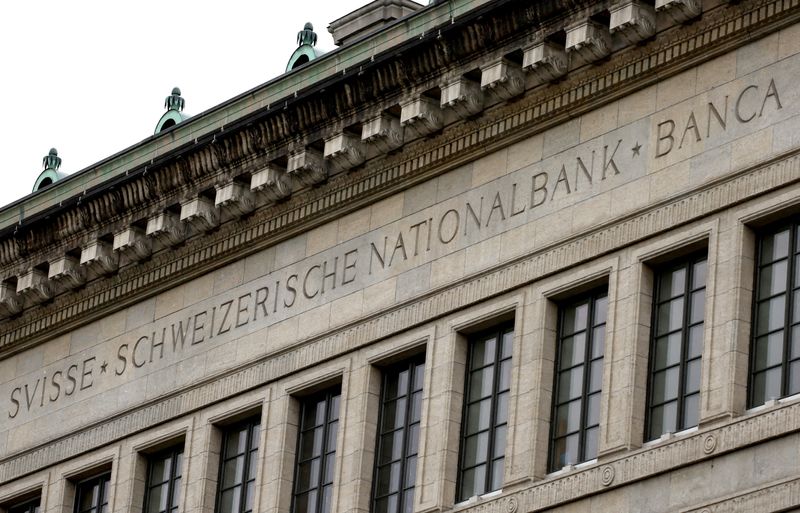ZURICH(Reuters) – The Swiss National Bank cut interest rates on Thursday for the second time running, pointing to easing price pressures that allowed it to maintain its position as a frontrunner in the global policy easing cycle now underway.
The Swiss franc weakened and stocks gained after the central bank cut its policy rate by 25 basis points to 1.25%, as expected by two-thirds of analysts polled by Reuters, following a similar move in March.
The decision had been finely balanced, given a recent rebound in economic growth and a break in the trend of gently falling inflation in Switzerland.
“The underlying inflationary pressure has decreased again compared to the previous quarter,” the SNB said. “With today’s lowering of the SNB policy rate, the SNB is able to maintain appropriate monetary conditions.”
“Taking into account today’s policy rate cut, the new conditional inflation forecast is similar to that of March. Over the longer term, it is slightly below the previous forecast.”
ING economist Peter Vanden Houte said the rate cut was not a big surprise given the recent strengthening of the franc on concerns about the upcoming French election that weighed on the euro.
“With decent Swiss GDP growth in the first quarter there was no real urgency for the SNB to cut rates, but given the still benign inflation outlook the SNB saw a window to ease: for the SNB it was more a rate cut because it could, not because it should,” Vanden Houte said.
The SNB maintained its Swiss economic growth forecast for this year at 1.0%, and slightly trimmed its inflation outlook for this year, next and 2026, keeping expectations comfortably inside the central bank’s 0-2% target range.
The Swiss franc eased after the rate decision while Switzerland’s blue chip stock index rose 0.5%, having been little changed before the announcement.
Various factors lie behind Switzerland’s low price pressures including an energy mix that makes the country less exposed to soaring oil and gas costs, wage restraint, and some protection against imported price inflation from the strong franc.
BUSY DAY
On a busy day for central banks on Thursday, the Bank of England is also due to announce its latest decision, with economists expecting it to keep its rates unchanged.
Norway’s central bank held its rates steady and pushed a possible rate cut into next year.
The Swiss decision came after the inflation in the country remained steady at 1.4% in May, meaning price rises have come within the SNB’s target band, which it says is consistent with price stability, for each of the last 11 months.
Thomas Gitzel, chief economist at VP Bank Group, said the SNB had done the right thing by lowering rates again. Had it not, “it could have created the impression the SNB was unsure about its key interest rate reduction in March.”
The recent declines in inflation allowed the SNB to become the first major central bank to cut rates at its last meeting.
Since then the SNB has been followed by the European Central Bank, which last week cut interest rates for the first time in five years.
The central banks of Canada and Sweden have also started to unwind rate cuts introduced to tackle the post-pandemic inflation surge.
The U.S. Federal Reserve last week, however, held rates steady and pushed out the start of rate cuts to later this year.

Economists said that after Thursday’s cut, room for more easing was limited for the Swiss central bank, with one more quarter-point move in September a possibility, but not a given.
“With the latest rate cut, the policy rate is now closer to its terminal value, which we estimate at 1.00%,” said Maxime Botteron, economist at UBS in Zurich, referring to a potential end point of the current easing cycle. “This means that the potential for additional cuts is limited.”
To read the full article, Click Here

